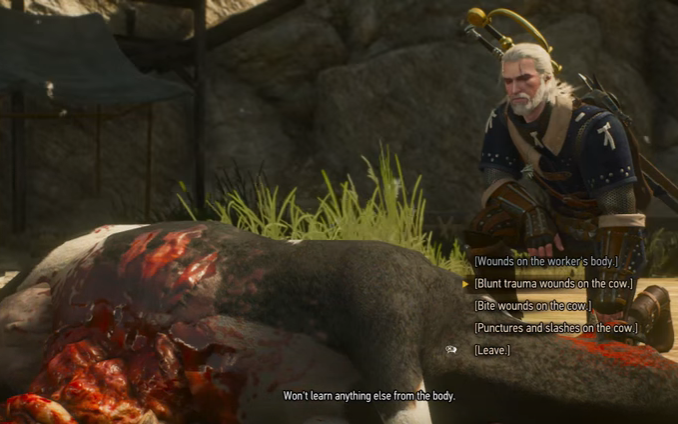Please note that this blog post has major spoilers for the video game Pentiment, which I highly recommend you play before reading further as its a fantastic game!

There’s lots you can talk about with Pentiment, a point-and-click historical mystery game set in 16th century Bavaria (and I’m sure I’ll talk about this game a lot on this blog in the future!), but as an archaeologist, what interested me the most was the overarching themes of storytelling, mythology, and history – not just as separate entities, but as tangible elements often in conflict with each other and impacting the lives and worldviews of people. Archaeology in itself is just another story, after all, that finds itself similarly engaging with folklore and mythology in both negative and positive ways – and we even see this in the game as well.
That the game is set in 16th century Europe isn’t surprising with these themes in mind – at this point in time, the Reformation had thrown previously accepted ideas of the world and beyond into question, including that of class and the feudal order (Koenigsberger et al. 1989, p. 1-2). Unsurprisingly, this coincides with more people becoming literate in Europe, allowing for people to engage with new schools of thought that often clashed with official religious teachings (Konnert 2008, p. 89) – in fact, literacy would become central to the reformation movement occurring in England at the same time (Pendergast 2006, p. 44).
The Player begins the game as Andreas, an educated and literate artist working on commissions in the local monastery of Tassing, Bavaria. Throughout the game, you’re able to have discussions with people from all different backgrounds: from uneducated peasants to well-read monks, to even some members of nobility. Despite the variance of education and literacy, however, many of the conversations you have are related to history, folklore, and literature, and the ways in which these things impact people and their sense of the world around them. For instance, an early conversation with one of the nuns, Sister Illuminata, has the two characters ruminating on the depiction of women in the Aeneid (an ancient epic poem written by the Roman poet Virgil) and how it mirrors the poor treatment of women at the time in the 16th century.
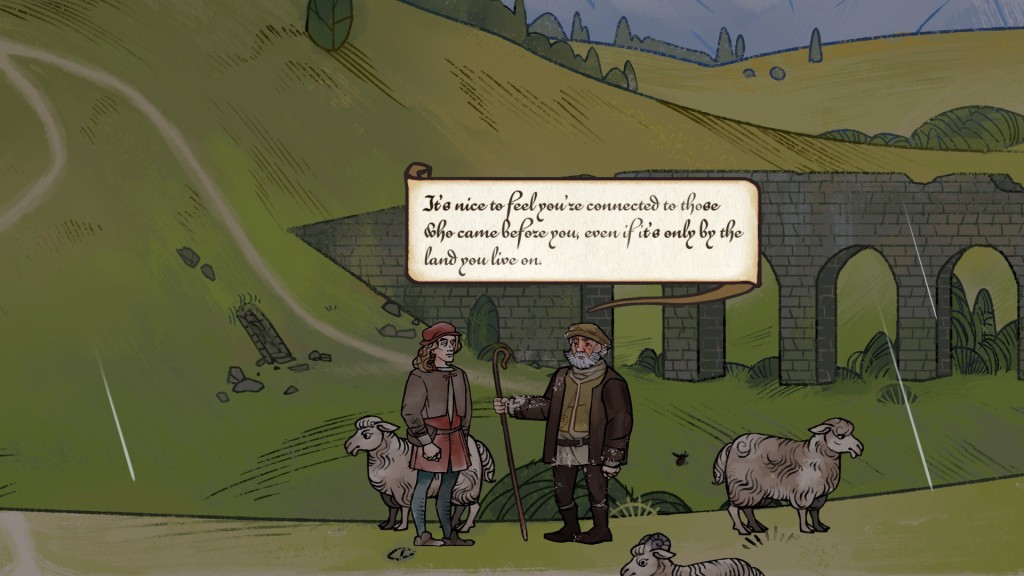
In another conversation with Til, a local townsperson, you can chat about the local folklore related to the Roman ruins found across Tassing and ponder the similarities between tales told of local saints and Roman mythology. Its in this conversation where Til makes a remark that I think hits upon a point that I fear is often obscured in archaeology: about the importance of local stories and how they can facilitate and strengthen connections to the surrounding land by making you feel part of a larger narrative, and how even the most fantastical folklore can draw from real, tangible elements (in this case, the local ruins and landscape of Tassing).
By Act 3, the importance of stories and histories became emphasised as the Player is entrusted with the task of painting a mural that represents the culture and history of Tassing. There is tension amongst the townsfolk with this task – some are worried about how the depiction of the past will be perceived by others, particularly those with authority. Despite this, the Player sets out to research the earliest known histories of the town, eventually making their way into the scattered bits of Roman ruins across Tassing to find out more about who once settled on these lands in the past. Of course, this being the 16th century, we’re still a bit aways from when we start to see the earliest iterations of what has been considered formal archaeological practice in the 17th and 18th centuries (Fleming 2020); as such, the Player is met with confusion and dismay at their insistence that these bits of the past (which other characters in the game will confess to finding and tossing during farm work!) could be used to further their understanding of ancient peoples.
This bit of proto-archaeology is quite interesting, with the Player being able to utilise pot sherds and Roman graffiti to extrapolate more information about Roman (and even pre-Roman) inhabitants of Tassing, even connecting some of the artistic depictions with folklore that has some of the town elders have mentioned in passing (to the chagrin of their God-fearing neighbours, as they often stray towards the paganistic). As the Player continues, they soon begin to see how some bits of evidence either confirms or contradicts others, with both textual and oral histories, stories, and folklore interconnecting into a messy web of fact and fiction.
Final warning – major spoilers for the plot of the game below!

This all culminates in the finale of the game, where the Thread-Puller (the person manipulating others to commit the murders throughout the game) is revealed to be Father Thomas, attempting to cover up the peasants and townsfolk of Tassing from learning the truth – that the stories of their Saints, who we have learned to be so central to the lives of these people, are simply Roman myths transformed over time. Such a revelation would potentially shake the foundations of their trust in the Church, which has already been tested by the influx of Reformation ideals being circulated by literate townsfolk as well as previous conflicts over taxes between the local monastery and the peasants.
It’s a revelation that truly encapsulates the tension at the heart of Pentiment – between stories and histories, and the ways in which the “truth” can become inconvenient or even dangerous to others looking to uphold a particular status quo. And the game doesn’t present the decision to tell the truth to the rest of the townsfolk as an easy one, either – having just spent all of Act 3 witnessing the effects of a failed peasant revolt, it is made clear to the Player that there are no light consequences for having one’s worldview completely changed.
To tie it all back to archaeology, I think Pentiment really illustrates how our understanding of the past isn’t just something that exists in a vacuum, but a messy, interconnected thing that touches upon every facet of society and culture. That Father Thomas risks so much to keep the truth of these stories and their connection to the pagan past away from the townsfolk emphasises how foundational one’s sense of history is to their worldview – to counter this requires a complete rethinking not just of one’s religious views, but also one’s place in a very hierarchical world. For archaeologists, I think this works in two ways – that every interpretation we develop has an impact on how people perceive not only their ancestors, but also themselves and the way they interact with the world around them, and that every local story or myth (even if its not necessarily the “truth” as viewed from the archaeological record) impacts the way that people view the past, which in turn colours their present and future worldviews. Maybe this conversation is getting a bit too circular and abstract, but the main point that I think I’m trying to get at (and that Pentiment clearly gets at!) is that stories (histories and otherwise) are so vitally important to people – not just through a lens of understanding the past, but for understanding…well, everything, really.
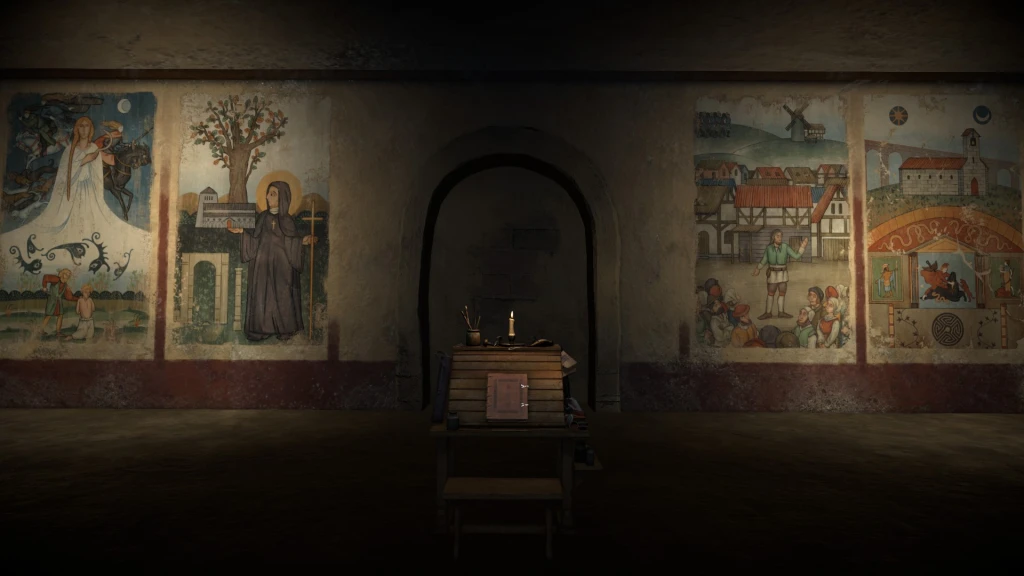
You can buy Pentiment now for PC via Steam or on Xbox.
References
Fleming, D. (2020). The Internationalization and Institutionalization of Archaeology, or, How a Rich Man’s Pastime Became an International Scientific Discipline, and What Happened Thereafter. Bulletin of the History of Archaeology, 30(1).
Koenigsberger, H.G., Mosse, G.L., & Bowler, G.Q. (1989). Europe in the Sixteenth Century. 2nd Edition. Harlow, UK: Longman.
Konnert, M. (2008). Early Modern Europe: The Age of Religious War, 1559-1715. Toronto, CA: University of Toronto Press.
Obsidian Entertainment (2022). Pentiment, video game, PC. Redmond, WA: Xbox Game Studios.
Pendergast, J.S. (2006). Religion, Allegory, and Literacy in Early Modern England, 1560-1640: the Control of the Word. Burlington, VA: Ashgate Publishing.
If you’re financially stable enough, why not donate to help out marginalised archaeologists in need via the Black Trowel Collective Microgrants? You can subscribe to their Patreon to become a monthly donor, or do a one-time donation via PayPal.
My work and independent research is supported almost entirely by the generosity of readers – if you’re interested in contributing a tiny bit, you can donate here.



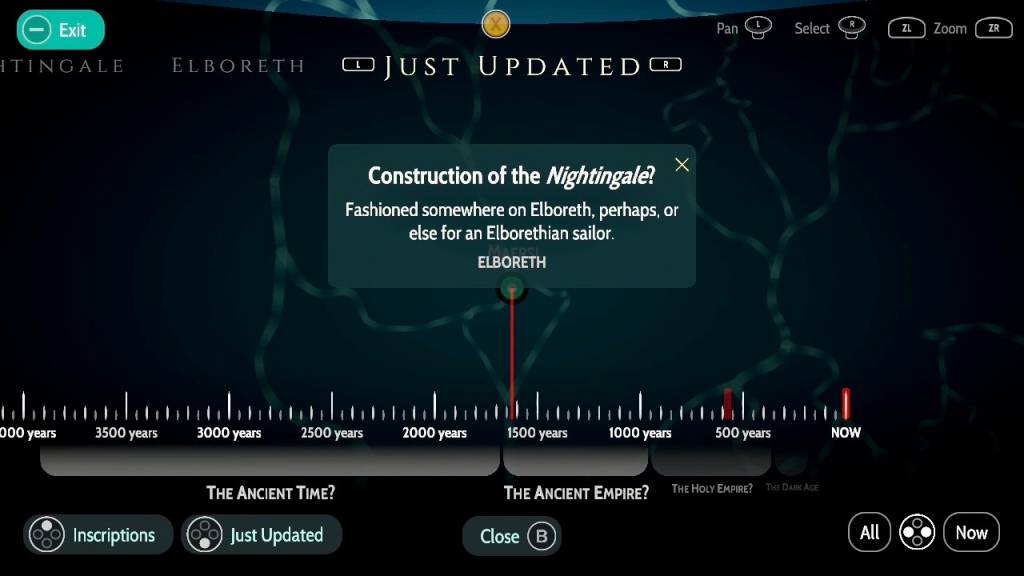






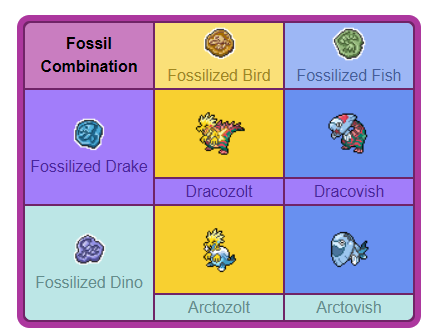








 Geralt, the main character, is a Witcher (have I written that word enough yet?). This means he’s been trained and physically & genetically enhanced in order to combat monsters and other deadly creatures.
Geralt, the main character, is a Witcher (have I written that word enough yet?). This means he’s been trained and physically & genetically enhanced in order to combat monsters and other deadly creatures.